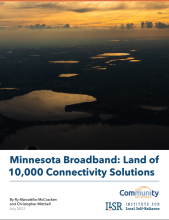New Report Explores Intersections of Real Estate and Broadband
With the pandemic-induced rise in remote work, distance learning, e-commerce, and telehealth, a new report published by the Urban Land Institute (ULI), sheds light on how the demand for high-speed Internet connectivity has “helped shift the real estate industry itself from thinking just in terms of physical space to also considering how to engage within a virtual environment.”
The ULI report, Broadband and Real Estate: Understanding the Opportunity, identifies the challenges and opportunities in addressing the digital divide and how real estate professionals and land-use planners can play a central role in designing and deploying broadband networks to meet the growing connectivity needs of communities everywhere.
The report explores four instances when community planners placed technology at the forefront of their development projects and details the positive impact it had on the projects -- from a neighborhood in Washington that designed its fiber-to-the-home network with an emphasis on sustainable development and energy efficiency, to a business and tech hub in Northern Virginia, whose owner purchased seven blocks of CBRS spectrum in 2020 to accelerate the deployment of 5G in the area, establishing it as a center for innovation.
Broadband and Real Estate [pdf] also provides guidance on how real estate planners and professionals can be pivotal in creating more equitable and competitive Internet access ecosystems. For example, the report recommends owners of multifamily properties, or MDUs, install carrier neutral wiring sets to each unit, so MDU residents always have a choice among broadband service providers. The report states owners of MDUs should own all of the Internet infrastructure in their building themselves, so it is independent and the property can not be monopolized by a single Internet Service Provider (ISP).
Some key takeaways from ULI’s Broadband and Real Estate report are:



